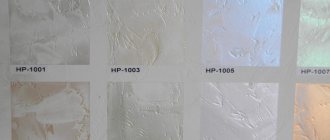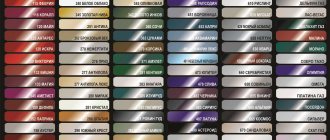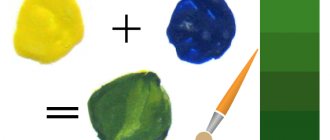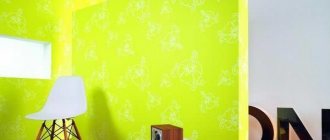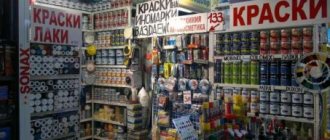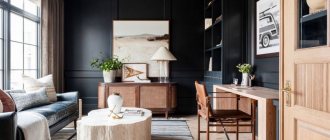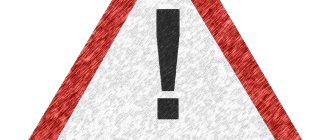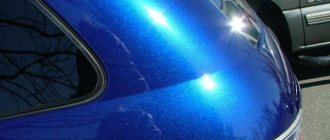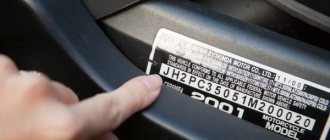The content of the article:
- What is three-layer paint?
- Three-layer paint “white pearl”
- The influence of the base coat on the color match of three-layer paint
- Surface preparation
- Application of three-layer paint, main points
- How to make a smooth transition when painting with three-layer paint?
- Painting the repair area inside one panel
- Three-layer paint on new body panels
- Production of test plates with different saturations of the mother-of-pearl layer (Letdown Panel)
How to get pearlescent color
It is very difficult to obtain a white pearlescent shade.
To do this, it is necessary to use special pigments that can reflect color. When a ray of light hits the pigments, a beautiful iridescence is formed, which changes shade depending on the viewing angle. It is worth noting that mother-of-pearl painting is recommended for use in certain weather conditions and for careful drivers, because in the event of serious impacts, it will not protect the body from scratches and chips.
Drivers are presented with a wide range of bright and soft shades. To make the car more noticeable, no additional textures or frills are required.
You can simply mix two or even three unique shades, which will allow you to prepare an exclusive coloring composition.
Follow some recommendations when applying pearlescent paint, and you will certainly get an impeccable result; it’s always nice to show off such a machine to your loved ones:
1. Visual depth can be achieved by double and triple painting. But do not confuse “mother of pearl” with metallic and chameleon shades.
2. When selecting all the components for painting, try to select one specified brand. Simply, formulations of different brands may reject each other, and cracks or swelling may appear on the surface of the car.
Multi-layer painting of the body surface cannot be avoided if you decide to achieve an iridescent effect.
3. The most difficult task when painting is creating identical highlights on the body. This effect can only be achieved if the paint used is the same temperature as the car body.
If it's colder, the shimmer effect will look completely different. The difference between such transitions will be visible to the naked eye. The same temperature of the paint and the surface guarantees strong adhesion to the metal.
Before application, the surface must be highly polished, because all defects will appear as it dries.
4. The shade of the base should be the same as the base one; the sooner you apply it after cleaning, the better it will affect the body.
5. When making paint, check its fluidity by diluting it with a solvent. Apply the paint in two layers, and be sure to seal the result with varnish. It is applied in several layers.
The first with a minimum amount of solvent. Usually 30-40 minutes are enough for the solvent to evaporate and the layer to dry, then you can carry out the procedure again to fix the varnish layer.
Many people recommend contacting specialists who will advise you on choosing a color. He will also be able to tell you what kind of paint or pigment can achieve the desired effect.
It is worth remembering that this paint is more capricious.
Even after a heavy rainfall, a poor coating can be damaged. Do not skimp on materials and then you will be confident in the result. This is almost the only negative, otherwise you get an original and beautiful appearance.
Be sure to study the recommendations indicated in the paint content; during work, do not forget about protective equipment.
Preliminary tests
You can conduct a simplified test, or you can do a more accurate one.
For any of them, you must first prepare three identical test plates.
Simplified test
- First, a substrate is applied to all wafers, which is used as the first layer of a three-layer system. The substrates have a high covering ability, so two layers are usually sufficient to cover the plate. To speed up drying between layers, you can use a hairdryer.
- After the substrate has dried, the first test plate is painted with one layer of pearlescent paint, the second with two, and the third with three layers.
- After the mother-of-pearl has dried, varnish is applied to all plates using standard technology. Since varnish can also affect the color of the mother-of-pearl, it is necessary to use the same varnish as for the repair.
After drying the test plates, we apply each of them to a car part (without a gap) and select the application method in which the repair paint most accurately matches the color of the original coating.
Color comparisons must be made from different viewing angles and lighting.
Let’s say the second plate matches, which means that when painting, you should apply 2 layers of mother-of-pearl using the same painting modes and gun adjustments that were used to make the test plate.
Accurate test
If you want to achieve an even more accurate match of the repair coating to the original, it is recommended to conduct a more complex test.
- We apply a substrate to all plates.
- We paint the first test plate with one layer of pearlescent paint, the second with two, and the third with three.
- We horizontally mask the upper halves of each plate and apply a “drop layer” of mother-of-pearl to their lower parts (at a pressure reduced to 1-1.5 bar and from a slightly greater distance).
- Again we mask each of the three plates by half, but now the border should run vertically. Apply clear varnish to half the plates.
As a result, we have four zones on each test plate:
The first zone is 1, 2 or 3 layers of pearlescent paint, respectively. The second zone is the same plus the last drip layer. The third zone is the same as in the first zone, but covered with transparent varnish. The fourth zone is the same as in the second zone, but covered with transparent varnish.
This test allows for double control: areas covered with varnish can be compared with the surface of the part, and areas free of varnish provide control over the process of applying pearlescent paint before applying varnish.
Features of mother of pearl
KIA Ceed SW Black mother of pearl Logbook Steering rack bulkhead Kia Sid 2008
Car enthusiasts prefer mother-of-pearl over metallic because of its interesting iridescence. In addition, an additional advantage is the increased thermal stability coefficient of the body. The metal of the car is varnished in several layers, gaining an additional barrier to mechanical damage.
Paints that have a pearlescent tint are classified according to a number of parameters.
- The paint can be coarse-grained or fine-grained. The indicator depends on the size of the crushed mica included in its composition and reflecting light. The larger size of crushed mica gives more expressive refraction (the average size of one particle is 20 microns). Finer grains form a smooth transition of tones with a uniform thickness of the applied layer;
- The end result differs depending on the application patterns. It is possible to paint a discreet painted surface with a paste that contains iridescent dye (no more than 1%). An alternative method is to paint with mother-of-pearl acrylic enamel (a mixture of acrylic paint and mother-of-pearl paint). This mixture is applied to a surface prepared in advance and painted in the base color. The final stage is spraying the finishing varnish.
- Professional specialists mix common polyurethane paint with mica components of varying degrees of grinding. Thus, the pearlescent color of the pastes varies in shades.
Common tone - white pearl
Transforming a car into such a seemingly simple color tone as white mother-of-pearl will require remarkable skill. The slightest disregard for technology will add rainbow shades to the color scheme.
Based on the painstaking nature of the process, a car enthusiast can choose a snowy metallic color, but the varnish will not be able to realize the effect of a white iridescence.
Coating the metal of a car with a capricious color will require careful selection of materials involved in the process. Paint will not be able to mask surface imperfections; it will only concentrate attention on them. Therefore, the logical choice of painting scheme is three-layer:
- The surface is degreased, primed, and a white base is sprayed;
- The second stage is the application of base paint with a pearlescent component;
- The final operation is varnishing.
Painting materials for a similar color scheme should be purchased from the same brand, otherwise the surface may peel off after a certain period of time.
The ideal size of crushed mica as an additional pigment in white pearlescent paint is 201-218. This size range of mica helps prevent the appearance of unwanted iridescence; the surface turns out to be white with a pearl shimmer.
How to achieve pearlescent shimmer (2 videos)
Pearl-colored car (24 photos)
How is pearlescent shade obtained?
Lexus IS almost ISF Logbook Gearbox Torsen T2
When the elite pearlescent color appeared in the auto world, it was only on very expensive cars and was even considered exclusive - after all, such a white tint was very difficult to achieve, and therefore they charged dearly for such services. And for good reason. After all, mother of pearl is truly one of the most beautiful materials created by nature.
The pearlescent color is truly unique - it can shimmer from soft pink to golden, and in the shade it becomes exquisitely creamy. That is why jewelry made from pearls has long been so valued - this color has always fascinated and will continue to fascinate with its unearthly beauty.
But mother of pearl is a really complex paint. To obtain this color and such iridescence, manufacturers add special pigments to it that reflect light. When hit by rays, they create a stunning metallic effect, and the shade itself can change depending on the lighting and even the viewing angle.
A two- or three-layer varnish coating gives the mother-of-pearl-painted surface a special visual depth, while at the same time serving the beautiful coating as excellent protection. After all, chameleon, mother-of-pearl, and any other complex colors are always painted in multi-layers, otherwise the iridescent effect cannot be achieved.
And the most difficult thing about painting with pearlescent is to achieve the same highlights throughout the car
That is why it is so important that the paint is the same temperature as the body - if it is colder, then in one place of the car it will create one flickering effect, and in another, having already warmed up, a slightly different one, which will undoubtedly be visible to the naked eye after completion of all work
It is also extremely important that both the paint and the solvent are from the same company. Otherwise, one substance may reject the second as “foreign” - for example, after a few months the paintwork will begin to deteriorate
That is why, before starting all the work, it is better to consult with an experienced craftsman or a tone selection specialist: he will tell you what kind of paint or what pigment can be used to achieve what effect.
There is another technology for painting with mother-of-pearl - purchasing special stickers. They won't last long, but for some time they will look like real paint and will even protect the factory paint. But this, of course, is not at all the same effect as from real painting.
How to apply pearlescent paint to walls
Surface preparation
GAZ Sobol 2752 white 510 Logbook Replacing dashboard backlight lamps with LEDs
It is carried out according to standard schemes for any painting: the wall or ceiling must be leveled, cleaned of dirt and dust, degreased and primed. In this case, it is better to choose special primers from the same manufacturer for pearlescent paint. Sometimes, before applying the composition, the wall is covered with base paint. Study the manufacturer's proposal and find ways to enhance the durability of the coating and its visual effect.
Tool selection
Brush. Using it over large areas is inconvenient and irrational. In addition to the high consumption of material and stains, applying paint with a brush also takes a lot of time and effort. But when painting corners, small areas or places with complex terrain, a brush is indispensable; Roller. The main tool in painting not only with pearlescent, but also with any other paint. Allows you to quickly and evenly cover large areas of walls or ceilings
At the same time, you need to work with it near the joints with caution, painting the very edges with a brush. It is best to choose tools with short pile and high-quality fur; Sponge
It is no longer used as a coloring agent, but as a decoration tool. Allows you to leave interesting patterns and textures on the wall, bringing to life various design solutions; Spray gun. If you need to paint large areas, you can consider the option of using a spray gun. We have already described the operating features and advantages of the latter in one of the previous articles.
Color options
Let's talk about concentration, which can be weak or strong. The first is preferable for painting the main surface area of the walls and ceiling. It is the choice of color that is important, and the faint pearl effect, which appears under certain lighting, gives it a unique visual appeal. Actually, in most cases we are talking about this method of applying the composition.
On the contrary, strong concentration brings to the fore the play of light reflected from the surface. It is not worth covering the main surface of the wall in this way, as the effect will be too pronounced and tiring. This approach is more used to highlight certain details.
iridescent varnish
The market is dominated by acrylic-based finishing varnishes, which have a pearlescent color and contain two components. Varnishes intended for the formation of iridescent colors may turn out to be transparent. Such a liquid can be used not only in its original form, but also with admixtures of pearlescent pigment. Among the market assortment, it is easy to find a varnish that initially contains pigment, then upon examination it no longer looks transparent, but will have a distinct tint.
The ratios of varnishes and their solvents or hardeners according to the instructions must be followed exactly - in the worst case, the integrity of the base coat will be compromised or the color spectrum will change.
Transparent paint can cover the base in only one layer as a finishing layer. In the case of using iridescent varnish, a three-layer coating scheme is implemented, which is completed by applying a transparent finishing car varnish.
Painting the repair area inside one panel
- If the repair area is small and located at a sufficient distance from the edges of the panel, then it can be painted without going over to the adjacent panel.
- Apply the base to the primed area and a little beyond so that the paint forms a smooth edge. After drying, the base layer should be wiped with a special gauze, slightly sticky cloth.
- Apply the mother-of-pearl using the reverse transition method, from the farthest outer point (starting at the farthest part of the transition), then apply a second layer inside the first in the direction of the repair area. Apply the required number of layers of mother of pearl according to the test plate.
- Dry the applied layers.
- Spray varnish over the entire panel.
Pearlescent color types of paints
The shade of pearlescent paint changes due to its constituent components. When exposed to light, this effect is achieved due to synthetic crystals, which are colored only on one side.
Decorative properties are provided by the process of mixing mother-of-pearl with the base of the coloring paste. The concentration of elements depends on the preferences of the car owner and the result he wants to get.
There are several types of paints, and they are classified according to the following criteria:
- Color;
- Level of crushed mica - light reflectors;
- Selected application option.
In the first case, pearlescent pastes can be presented in any shade due to the fact that the paint with shimmering mica pigments is diluted. Drivers often choose the following colors: silver, blue, red, white.
Although the white shade is popular, you need to be prepared for the fact that it requires special care. If a chip or swelling appears on the surface, it will be immediately noticeable with this color.
To avoid streaks and fading, future owners of a white pearlescent shade will have to thoroughly mix the paint with a solvent. The remaining shades are not so whimsical; once a stain appears, it can be retouched, and it will not be so noticeable.
As a rule, when cracks appear, they try to completely repaint the car.
The consistency directly determines how much the surface will shimmer. The mica particles must be larger; this is the only way to achieve a brighter color and refraction.
Select compounds with an index of more than 20 micrometers. Small particles of mica do not exceed this figure. This paint covers evenly and has a smooth transition of shades.
The application of pearlescent color can be carried out in two ways:
- Pearlescent paste is applied to the painted surface in one layer. In this case, the consistency is no more than 1% iridescent pigment.
- Mixing pearlescent paste with acrylic paint. A solid base color should be applied first. And apply decorative varnish on top of the painted surface for strength and durability of the coating.
Preparation and tools
With medium and small grains, the spray gun and nozzle are no different from the standard ones. Large grains, more often used for airbrushing, can clog the spray bottle, although an event of this order is rather an exception (standard grain size is 5-40 microns). Unlike a spray bottle, increased requirements are placed on the premises, because for 25 grams of pigment you will have to fork out 1-2 thousand rubles.
Complete painting of a car using this additive will cost 20-30 thousand rubles. This is partly why partial painting with sparkles is more often used. In this case, it is better to stock up on masking tape in advance. It would be a good idea to have an orbital machine on hand and buy the materials from one manufacturer.
Technology of painting cars in white pearlescent color
It is necessary to carefully prepare for the procedure and stock up on the following materials: varnish, spray gun, substrate, base, solvent, primer, grinder.
In the field of automotive painting, pearlescent color is considered a popular shade. Black mother of pearl is in great demand.
Inexperienced craftsmen in this matter choose this option for applying the material - sequential painting with enhanced iridescent color.
Patience and attention are the main qualities required when carrying out a complex painting procedure:
1. Preliminary preparation of the body is the same as for regular painting - cleaning from dirt and dust, sanding, degreasing. The spray booth should be at the same temperature as the car.
If there is a crack on the surface, it is necessary to cover it with a primer and sand it after drying. To speed up the work and carry it out at a professional level, you need to use a grinding machine. It also minimizes the possibility that you will miss some part of the body.
This work is carried out where it is dry and there is ventilation. To prevent mother-of-pearl from getting on your hands, wear gloves. Since mother-of-pearl is similar to gloss, you cannot do without creating a smooth coating; all roughness will be visible. Once you have prepared the surface for painting, apply the undercoat.
2. Do not delay in applying the undercoat, which should match the base color.
3. Apply paint in 2-3 layers, having previously prepared it. The best option is a 2:1 ratio - 100 grams of base to 50 grams of solvent. Mother of pearl is applied with a paint gun; the tool sprays the paint evenly.
The layer dries out after 30 minutes, and it immediately becomes matte in appearance. The paint is drained from the gun into a previously prepared container. More solvent is added there, and the paint is again applied on top of the first layer. Subsequent layers can be made thicker.
4. The varnish is applied according to the same principle - the first layer is dry, and the second with a solvent. To apply it, take several times less than indicated in the instructions. Do not rush to apply the varnish to avoid drips, otherwise you will have to do everything from the very beginning.
Each layer of paint is applied when the solvent has completely evaporated. You should not touch the surface; you cannot polish or matte it.
The success of this procedure depends one hundred percent on you, because it is important to wait for complete drying, not touch the coating and maintain equal temperatures. As you have already seen, the procedure is very labor-intensive and complicated, but it’s worth it
After all, you get a beautiful shimmering shade, reliable protection against chipping, and high heat resistance
As you have already seen, the procedure is very labor-intensive and complicated, but it is worth it. After all, you get a beautiful shimmering shade, reliable protection against chipping, and high heat resistance.
Such a procedure in any workshop will cost a pretty penny, so many try to figure it out on their own. For the sake of such shine, neat coating and original appearance, many drivers are willing to spend money.
Applying a clear base
Before applying the substrate (especially in cases where the substrate is not just colored, but with metallic inclusions), it is recommended to spray the part (or most of it) with a layer of transparent base designed to eliminate the visible boundaries of the repaired area.
In the case of repairing three-layer coatings, it is undesirable to apply a colorless base to the priming zone - the likelihood of an “edge effect” is too high. It consists of dissolving the edge of the primer spot with a large amount of solvent from subsequent layers. And there are still so many layers ahead of us, which means the risk of exposure of the solvent from these layers to the soil increases.
And since the “job” of a colorless base is to prepare the surface to accept particles of material in the transition zone, we will apply it precisely in this zone, without wasting it on the entire surface.
In our case, the mixture is applied starting from the beginning of the door and somewhere halfway, closer to the handle - it is in this area that the transition will be located.
Pigments are the basis of pearlescent paint
Unusual effects of light refraction, causing the surface to characteristically shimmer with all the colors of the rainbow - this is why we love mother-of-pearl. This material is based on material extracted from oysters. We are, of course, not talking about pearls, but about shells. However, this material is extremely expensive for paint, and it is mainly used in cosmetics. The creators of the finishing material decided to go a different route and used mica and glass, which allows them to achieve different levels of transparency.
- Glass – complete transparency;
- Artificial mica – translucent;
- Natural mica is an ordinary opaque mother of pearl.
What can be added to enamel to get a pearl effect?
If it's all about the pigment, then it is quite obvious that in addition to ready-to-use pearlescent paint, its component itself is also available for sale. By adding it to any paint you can get the same effect.
Mother of pearl color and its features
Cars painted with pearlescent paint attract attention. This shimmering effect can be created due to the presence of mica particles coated with aluminum oxide in the paint used.
These particles are small, completely flat and vary in size. Thanks to their use, you can achieve a flickering effect, which will differ if you look at the body from different angles.
Pearlescent color can be used in different ways, creating an unusual look for the vehicle.
The paint is applied to the body in different ways: it can be mixed with the base and get an almost imperceptible shimmer effect. In this case, you need to follow the technology and apply paint in several layers to make the result more effective.
The modern assortment allows you to choose a shade to suit every taste; the color is already quite bright (no additional effects need to be applied during the coloring process).
Why are three layers needed?
The presence of aluminum powder in paint does not mean that it needs to be applied in three layers. Two-component “metallic” (painted base plus varnish) has not yet lost its popularity, although there are more opportunities for obtaining good results when the pigment layer is applied separately from the substrate. From what has been said it should already be clear that the three-layer system involves the creation of three levels:
- Substrate.
- The base layer containing the pigment.
- Varnish.
The substrate is a special primer, sometimes called toner primer. Its presence in the system does not eliminate the need to prime the car (tonor usually does not have anti-corrosion properties), but a little less primer can be used. The color of the primer composition is selected based on the color of the main paint, since both the base and the substrate can be tinted. Two color options are possible:
- White (light, beige) backing.
- Substrate to match the color of the base layer.
White paint reflects light well, due to which it can slightly enhance the flickering effect of three-layer systems and enhance the glow emanating from luminescent paint. However, a transparent pigment base means that the color of the base will be clearly visible, which does not always look the way the car owner wants. The substrate and base of the same color are needed so that the paint has volume, i.e. the shine and shimmer changed with changing angles of view.
For obvious reasons, the base layer should not overlap the substrate, otherwise there will be no point in the tinting primer - it is applied only for color. In view of this, tinting the base is carried out differently than with conventional enamels. This is a translucent paint, and the substrate is tinted in the same color, but completely. Unlike a base coat, painting with a tint primer must completely cover the underlying metal or primer.
Application of three-layer paint, main points
- Three-layer mother-of-pearl consists of the following layers: a base layer (covers the repair area), a mother-of-pearl layer (applied to the base and gives the effect of mother-of-pearl) and a varnish layer (a protective layer that gives gloss). An important factor for white pearl paint is the layer that gives the pearl effect. You will achieve the closest match to the original if you use test plates. We will look at how to make them at the end of the article. It is important that you spray exactly the same number of coats as on the test plate that best matches the original.
- The more pearl you apply, the more the shade of the base layer changes. It is important to spray the pearl evenly. The layers sprayed between the panels should not overlap each other. That is, the entire area needs to be covered with mother-of-pearl at a time, and not in segments. Otherwise, at the junction of these segments there will be spots of a darker shade (due to greater saturation with mother-of-pearl). That is, you don’t need to paint panel by panel with mother-of-pearl, as is usually done with regular paint (front fender, then doors, rear fender, etc.)
- If there is not enough space between the repair area and the adjacent panel(s), it is necessary to make a smooth transition to the adjacent panel. New body panels and bumpers should also be painted to blend into the adjacent area(s) to ensure visual color consistency.
The rear fender is end-to-end painted. The color of the three-layer paint was chosen incorrectly.
- All painted panels must be completely varnished.
- The correct air pressure on the spray gun should be high enough to atomize the paint and low enough to avoid excessive dusting or uneven spraying. The spray gun may be approximately 0.8–1.8 bar (for HVLP), depending on the type of paint. Do a test spray and adjust the pressure as needed.
- The spray gun should always be held perpendicular to the surface so that the paint applies evenly.
- The base layer is applied at a distance of 15–20 cm from the surface.
- Three-layer paint (especially candy paint) should be sprayed in straight lines, not following the lines of the body.
- Mother of pearl is applied at a distance of about 25 cm from the surface. The aisles must be blocked by 75% to avoid streaking. The final surface layer is applied at an increased distance from the surface (5–10 cm) and with a faster movement of the spray gun.
- Do not sand the mother-of-pearl layer, otherwise, if it becomes necessary to sand the mother-of-pearl layer (for example, to remove a defect), you will need to apply an additional layer, which will make the overall shade of the paint darker.
- When painting with three layers, there are more layers than usual, so it is important to allow enough time for drying between layers and to ensure that all layers of paint have additional drying time before applying varnish, so that the base is not soft and the solvent does not remain under its film, which can lead to paint defects. Some paint manufacturers even recommend adding a special hardener to the base to solve the problem of multiple layers and “softness” of the base. Toyota recommends applying an intermediate coat of varnish after spraying the base, then drying and treating it for painting, thereby, as they say, providing a good base for the pearlescent and subsequent layers of varnish. You can follow the recommendations of the manufacturer of the paints and varnishes you use. The option with good drying (enough time, without speeding it up with blowing from a spray gun) also works fine.
Pearlescent varnish
The color of a car, white pearl, may not be very saturated, and to give the shade the necessary depth, craftsmen often use varnish for the final coating of the body. Externally, this composition strongly resembles a metallic coating, but has a more saturated color.
The cost of such a coating is quite high, but at the same time there are a lot of shades on sale from different manufacturers, so you can choose the color in accordance with the wishes of the car owner. The color of the coating may vary depending on the distance to the body, light brightness and viewing angle.
original car color
The composition of the mother-of-pearl base necessarily includes metal particles, which are small in size, but there are a lot of them in the composition. These particles are located in several layers in the thickness of the base.
What is three-layer paint?
As the name suggests, “three-layer paint” involves applying multiple layers to achieve a specific effect. We are talking about different types of layers. Each type of layer, in turn, can be applied in several layers. Regular paint without varnish is single-layer, two-layer requires applying a layer of varnish over the base, three-layer consists of a base layer (the so-called substrate), then pearl is applied, then varnish. In general, pearlescent paints can be two-layer (base mixed with mother-of-pearl, coated with varnish) or three-layer (base + pearlescent layer + varnish).
Pearlescent colors were used in car customization back in the sixties. When painting cars at factories, mother-of-pearl began to be used in the early 1980s. At first, three-layer paint was used on expensive premium cars. Now everything has changed, and many cars, including small cars, are painted with this paint. Currently, the most widely used pearlescent additive is transparent mica plates coated with titanium dioxide. Xirallic, glass pearl pigment, and bismuth oxychloride crystals are also added to paints. The purpose of pearlescent pigments is to imitate the natural shine of pearls. The mica flakes are very smooth, so they are reflective while maintaining a high degree of transparency, meaning that only part of the light is reflected. The part that is not reflected is transmitted through the plate to the next layer, where it can be further reflected.
The result is multiple reflections. The eye cannot focus on any one layer, and a feeling of depth is created. Thus, a special type of shine is observed, called pearlescent. Three-layer paint changes shade at different viewing angles. The most common three-layer mother-of-pearl is pearlescent white.
